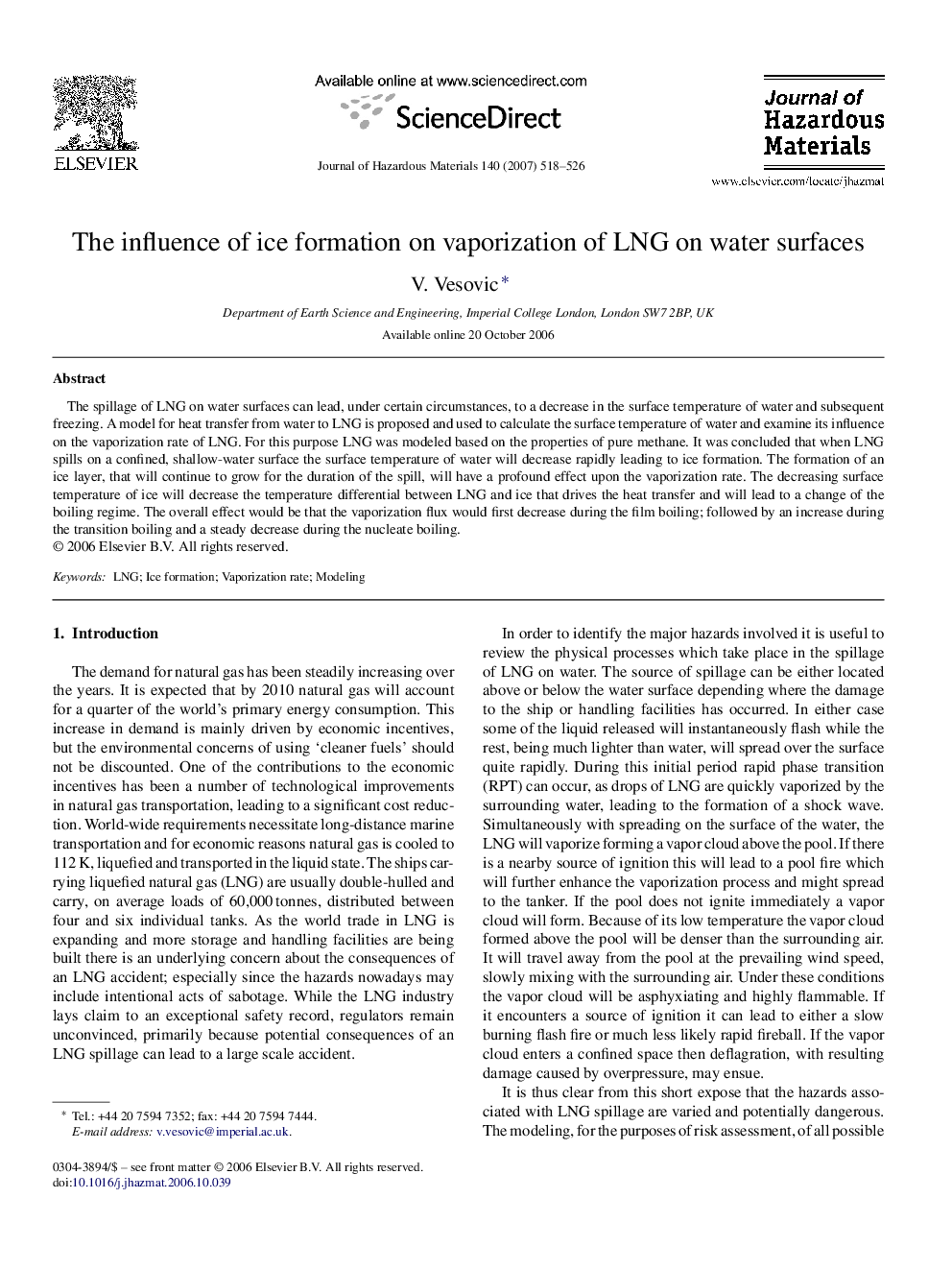| Article ID | Journal | Published Year | Pages | File Type |
|---|---|---|---|---|
| 585045 | Journal of Hazardous Materials | 2007 | 9 Pages |
Abstract
The spillage of LNG on water surfaces can lead, under certain circumstances, to a decrease in the surface temperature of water and subsequent freezing. A model for heat transfer from water to LNG is proposed and used to calculate the surface temperature of water and examine its influence on the vaporization rate of LNG. For this purpose LNG was modeled based on the properties of pure methane. It was concluded that when LNG spills on a confined, shallow-water surface the surface temperature of water will decrease rapidly leading to ice formation. The formation of an ice layer, that will continue to grow for the duration of the spill, will have a profound effect upon the vaporization rate. The decreasing surface temperature of ice will decrease the temperature differential between LNG and ice that drives the heat transfer and will lead to a change of the boiling regime. The overall effect would be that the vaporization flux would first decrease during the film boiling; followed by an increase during the transition boiling and a steady decrease during the nucleate boiling.
Keywords
Related Topics
Physical Sciences and Engineering
Chemical Engineering
Chemical Health and Safety
Authors
V. Vesovic,
